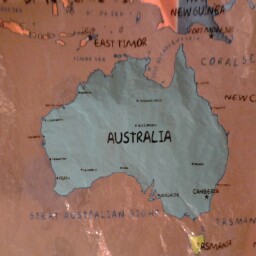Lacy G Cook
age ~73
from El Segundo, CA
- Also known as:
-
- Lacy B Cook
- Lacy Elizabeth Cook
- Lacy Liz Cook
- Larc G Cook
- Gordon Cook Lacy
- Phone and address:
-
615 Eucalyptus Dr, El Segundo, CA 90245
3103221513
Lacy Cook Phones & Addresses
- 615 Eucalyptus Dr, El Segundo, CA 90245 • 3103221513
- Hawthorne, CA
- Inglewood, CA
- Dry Branch, GA
- Gray, GA
- Downey, CA
- Los Angeles, CA
- 615 Eucalyptus Dr, El Segundo, CA 90245 • 3102003395
Work
-
Position:Food Preparation and Serving Related Occupations
Education
-
Degree:Associate degree or higher
Resumes

Lacy Cook
view source
Housekeeper And Caregiver
view sourceWork:
Housekeeper and Caregiver
Name / Title
Company / Classification
Phones & Addresses
President
EL SEGUNDO BOY SCOUT ASSOCIATION, INC
Civic/Social Association
Civic/Social Association
PO Box 998, El Segundo, CA 90245
PO Box 998, El Segundo, CA 90245
PO Box 998, El Segundo, CA 90245
Us Patents
-
Dual Color Anti-Reflection Coating
view source -
US Patent:6700699, Mar 2, 2004
-
Filed:Dec 13, 2002
-
Appl. No.:10/319266
-
Inventors:Lacy G. Cook - El Segundo CA
-
Assignee:Raytheon Company - Waltham MA
-
International Classification:G02B 520
-
US Classification:359359, 359360, 359350, 359361
-
Abstract:A multi-layer anti-reflection coating for simultaneously coupling electromagnetic radiation of two different wavelengths, and , where is greater than , from a first region into a second region is provided. The first region has an index of refraction that is smaller than that of the second region. The anti-reflection coating comprises three layers: (a) a first layer and a third layer that are essentially invisible to and serve to reduce Fresnel losses for and (b) a second layer sandwiched between the first and third layers that serves to reduce Fresnel losses for. The thickness and the index of refraction are calculated for each layer.
-
Compact Four-Mirror Anastigmat Telescope
view source -
US Patent:6767103, Jul 27, 2004
-
Filed:Mar 22, 2002
-
Appl. No.:10/104423
-
Inventors:Lacy G. Cook - El Segundo CA
-
Assignee:Raytheon Company - Waltham MA
-
International Classification:G02B 510
-
US Classification:359859, 359861, 359729, 359728
-
Abstract:An optical system comprises a three-mirror anastigmat including a primary mirror, a secondary mirror, and a tertiary mirror positioned to reflect a beam path. An intermediate image is formed on the beam path at an intermediate-image location between the secondary mirror and the tertiary mirror. A negative-optical-power field mirror is positioned in the beam path at a field-mirror location subsequent to the intermediate-image location along the beam path. The field mirror reflects the intermediate image to the tertiary mirror.
-
Method And Laser Beam Directing System With Rotatable Diffraction Gratings
view source -
US Patent:6792028, Sep 14, 2004
-
Filed:Mar 22, 2002
-
Appl. No.:10/104421
-
Inventors:Lacy G. Cook - El Segundo CA
Roger J. Withrington - Los Angeles CA -
Assignee:Raytheon Company - Waltham MA
-
International Classification:H01S 308
-
US Classification:372102, 372 98, 372 99, 372100, 372101, 372103
-
Abstract:A laser beam pointing and positioning system includes first and second rotatable diffraction gratings. Each grating deviates a laser beam by a predetermined angle of deviation. The relative rotational position of the gratings is controlled to change the beam steering angle and direction of a laser beam. A maximum beam steering angle of twice the angle of deviation may be achieved in any direction. The diffraction gratings may be etched on transmissive substrates of optical glass, sapphire, silicon (Si), Zinc Selenide (ZnSe), Zinc Sulfide (ZnS), or Germanium (Ge). The substrates may be positioned within rotary elements coupled respectively to electromechanical positional control elements to rotate the gratings.
-
Ambient-To-Cold Focus And Alignment Of Cryogenic Space Sensors Using Uncooled Auxillary Detectors
view source -
US Patent:6833547, Dec 21, 2004
-
Filed:Jun 14, 2002
-
Appl. No.:10/171956
-
Inventors:Roy A. Patience - Thousand Oaks CA
Larry L. Cunningham - Redondo Beach CA
Ray D. Kroll - Alta Loma CA
Lacy G. Cook - El Segundo CA -
Assignee:Raytheon Company - Waltham MA
-
International Classification:H01J 502
-
US Classification:250352, 250332
-
Abstract:A system and method for focusing infrared detectors operable at cryogenic temperatures. The invention includes a sensor ( ) for detecting electromagnetic energy comprising a first detector ( ) operable over a first temperature range and a predetermined number of auxiliary detectors ( ) operable over a second temperature range, wherein the auxiliary detectors ( ) are adjacent to and in the same optical plane as the first detector ( ). In the illustrative embodiment, the energy is infrared or visible light, the first temperature range is a range of cryogenic temperatures, and the second temperature range is a range of ambient temperatures. The first detector ( ) is a focal plane array and the auxiliary detectors ( ) are uncooled detector arrays. In the preferred embodiment, the focal plane array ( ) and the uncooled detectors ( ) are disposed on a common substrate. In accordance with the teachings of the present invention, the novel sensor ( ) can be used to focus an optical system at cryogenic temperatures.
-
High-Resolution, All-Reflective Imaging Spectrometer
view source -
US Patent:6886953, May 3, 2005
-
Filed:Feb 25, 2003
-
Appl. No.:10/374911
-
Inventors:Lacy G. Cook - El Segundo CA, US
-
Assignee:Raytheon Company - Waltham MA
-
International Classification:G02B005/10
-
US Classification:359859, 359858, 359861
-
Abstract:An imaging spectrometer includes an all-reflective objective module that receives an image input and produces an objective module output at an exit slit, and an all-reflective collimating-and-imaging module that receives the objective module output as an objective-end input and produces a collimating-end output, wherein the collimating-and-imaging module comprises a reflective triplet. A dispersive element receives the collimating-end output and produces a dispersive-end input into the collimating-and-imaging module that is reflected through the collimating-and-imaging module to produce a spectral-image-end output. An imaging detector receives the spectral-image-end output of the collimating-and-imaging module. The objective module may be a three-mirror anastigmat having an integral corrector mirror therein, or an all-reflective, relayed optical system comprising a set of five powered mirrors whose powers sum to substantially zero. The collimating-and-imaging module may be optimized to minimize spectral smile.
-
Fast, Wide-Field-Of-View, Relayed Multimirror Optical System
view source -
US Patent:6902282, Jun 7, 2005
-
Filed:Mar 22, 2002
-
Appl. No.:10/104424
-
Inventors:Lacy G. Cook - El Segundo CA, US
-
Assignee:Raytheon Company - Waltham MA
-
International Classification:G02B005/10
-
US Classification:359859, 359861, 359729, 359731
-
Abstract:An all-reflective, relayed optical system is arranged along a beam path. The optical system includes a first mirror having positive optical power, and a second mirror having a negative optical power, wherein the second mirror receives the beam path reflected from the first mirror and wherein an intermediate image is formed after the beam path reflects from the second mirror. The optical system further includes a third mirror having positive optical power, wherein the intermediate image on the beam path is reflected from the third mirror; a fourth mirror having a negative optical power, wherein the beam path reflected by the third mirror is reflected by the fourth mirror, and a fifth mirror having positive optical power, wherein the beam path reflected by the fourth mirror is reflected by the fifth mirror to an image location.
-
Optical System For Simultaneous Imaging Of Lwir And Millimeter Wave Radiation
view source -
US Patent:6919988, Jul 19, 2005
-
Filed:May 6, 2002
-
Appl. No.:10/139943
-
Inventors:Lacy G. Cook - El Segundo CA, US
-
Assignee:Raytheon Company - Waltham MA
-
International Classification:G02B013/14
-
US Classification:359356, 359350
-
Abstract:A system and method for simultaneous imaging of both infrared and millimeter wave radiation. The novel optical system () includes a primary mirror (), a Mangin secondary mirror () positioned to receive energy reflected from the primary mirror (), and an immersion lens () for focusing energy received from the Mangin mirror (). In the illustrative embodiment, the primary mirror () and Mangin mirror () are arranged in a Cassegrain configuration. Central to this invention is the use of a negative power refractive Mangin mirror () as the Cassegrain secondary mirror, so that the field curvature of the secondary mirror () and immersion lens () can be made to cancel. The immersion lens () effectively decreases the wavelength of the millimeter wave radiation, allowing a smaller detector to collect the same amount of radiation as would a larger detector in air. In the illustrative embodiment, the system () further includes a detector array () placed in intimate contact with the immersion lens ().
-
Compact Inverse-Telephoto Infrared Imaging Optical System
view source -
US Patent:6989537, Jan 24, 2006
-
Filed:Nov 18, 2003
-
Appl. No.:10/715678
-
Inventors:Lacy G. Cook - El Segundo CA, US
-
Assignee:Raytheon Company - Waltham MA
-
International Classification:G01J 5/02
-
US Classification:250353
-
Abstract:An infrared imaging optical system includes a front lens group having negative optical power, wherein the front lens group comprises a front lens having a refractive index of from about 2. 0 to about 3. 0; an intermediate lens group that receives an infrared light beam from the front lens group, wherein the intermediate lens group comprises an intermediate lens having a refractive index of from about 1. 35 to about 2. 0; and a rear lens group having positive optical power, wherein the rear lens group receives the infrared light beam from the intermediate lens group, wherein the rear lens group comprises a rear lens having a refractive index of from about 2. 0 to about 3. 0, and wherein at least two of the front lens, the intermediate lens, and the rear lens have at least one aspheric surface thereon. The infrared imaging optical system further includes an infrared detector that receives the infrared light beam from the rear lens group. There is a pupil located between the rear lens group and the detector.
Googleplus

Lacy Cook

Lacy Cook (Lacclovesfashi...

Lacy Cook

Lacy Cook

Lacy Cook
view source
Lacy Cook
view source
Lacy Cook
view source
Lacy Gilde Cook
view source
Lacy Cook
view source
Lacy Cook
view source
Lacy Cook
view source
Lacy Cook
view sourceClassmates

Lacy Banister (Cook)
view sourceSchools:
Reagan Magnet Elementary School Odessa TX 1976-1980, Alamo Junior High School Midland TX 1982-1984, Midland Freshman High School Midland TX 1984-1985
Community:
Art Mosley, Billy Reeves, Glenda Loudermilk, Hellen Young
Biography:
Life
I work for a psychiatrist in San Angelo Texas. I am married, have 2 kids, a b...

Lacy Cook (Gilde)
view sourceSchools:
Grand Haven High School Grand Haven MI 1991-1995

Reagan Magnet Elementary ...
view sourceGraduates:
Lacy Cook (1976-1980),
Pharren Crawford (1994-1998),
John Smith (1997-2001),
Max Geron (1979-1981)
Pharren Crawford (1994-1998),
John Smith (1997-2001),
Max Geron (1979-1981)

Midland Freshman High Sch...
view sourceGraduates:
Lacy Cook (1984-1985),
Yesenia Galindo (1992-1996),
Melissa Leon (1978-1982),
Nancy Trini Williams (1984-1985),
Kristina G (2004-2008)
Yesenia Galindo (1992-1996),
Melissa Leon (1978-1982),
Nancy Trini Williams (1984-1985),
Kristina G (2004-2008)

Alamo Junior High School,...
view sourceGraduates:
Lacy Cook (1982-1984),
Patricia Griffith (2002-2006),
Judy Strickland (1956-1958),
Courtney Levasseur (1994-1995)
Patricia Griffith (2002-2006),
Judy Strickland (1956-1958),
Courtney Levasseur (1994-1995)
Myspace
Youtube
Get Report for Lacy G Cook from El Segundo, CA, age ~73










